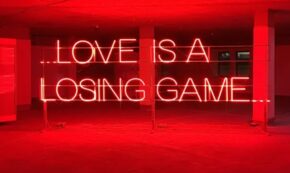That’s typically what I think.
Sex & Relationships
Escape Red Pill #20: “Spinning Plates Keeps Her Chasing’
No, no, I don’t want that.
No, no, I don’t want that.
How To Make 2024 the Year You Find Love
. Transcript provided by YouTube. Slightly edited with AI. One Challenge With New Year’s Resolutions This time of year marks the initiation of resolutions for many individuals – a commitment to change in 2024. Common resolutions revolve around goals we wish to accomplish, such as finding love, boosting confidence, feeling more attractive,…
I Feel Like I’m Really Trying Hard to Get Over a Man
But the Universe is telling me something else.
But the Universe is telling me something else.
A Story of Lost Love and Self-Realization
Ex-wife falls ill with no one to care. Sends a “Are you there?” message to ex-husband in the middle of the night, tears streaming down her face upon receiving a reply.
Ex-wife falls ill with no one to care. Sends a “Are you there?” message to ex-husband in the middle of the night, tears streaming down her face upon receiving a reply.
How More Fighting Is the Secret to a Great Relationship
And how to handle the conflicts that WILL happen.
And how to handle the conflicts that WILL happen.
What to Do If You Disagree With Your Partner About Having Kids?
Resolving issues around the decision to have children may take time to fix.
Resolving issues around the decision to have children may take time to fix.
3 Stark Truths Every Man Must Accept About Modern Dating
The game is still the game.
The game is still the game
The Cheater’s Revenge
Another one of life’s little ironies.
Another one of life’s little ironies.
It’s Not Just Sex You Lose in a Dead Bedroom
You lose so much more in a sexless relationship.
You lose so much more in a sexless relationship.
Tossing and Turning: Why You Can’t Sleep After Breakup and What to Do
A consistent evening ritual that helps you relax and unwind can signal to your body that it’s time for sleep.
A consistent evening ritual that helps you relax and unwind can signal to your body that it’s time for sleep.
The Pursuit of Perfection in Relationships
What It takes to find the perfect relationship.
What It takes to find the perfect relationship.
Facing Reality: The Honest Truth About Sexless Relationships
Your worth is not defined by societal norms or sexual performance. It's found in your ability to embrace vulnerability, honesty, and self-discovery.
Today, I want to shed some light on a common but often overlooked challenge that many men and couples face: being in sexless relationships. It’s a topic that’s often lived in silence and shame. It’s way more common than we might think, but it’s absolutely possible to emerge from these dry spells. When working with…
How to Create Peace Instead of Conflict in Your Relationships
Dealing with conflict becomes unnecessary when you choose not to create conflict.
Dealing with conflict becomes unnecessary when you choose not to create conflict.
A Simple Dating Tool Like This Changes Everything. You’re Probably Not Using it.
Just be patient.
Just be patient.
Lesson From the Deity of Love
How I found out I haven't got a clue what love is.
How I found out I haven’t got a clue what love is.















